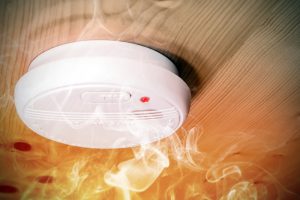 As winter draws near, there are a lot of things to concern yourself with around the house. Winterizing the home means covering windows, filling up air leaks and tackling drafts, packing up the garden hose and winterizing the outdoor faucets, and insulating wherever you can. It means checking the storm drains again, inspecting the fireplace and chimney, and digging winter décor and blankets out of storage.
As winter draws near, there are a lot of things to concern yourself with around the house. Winterizing the home means covering windows, filling up air leaks and tackling drafts, packing up the garden hose and winterizing the outdoor faucets, and insulating wherever you can. It means checking the storm drains again, inspecting the fireplace and chimney, and digging winter décor and blankets out of storage.
But perhaps the simplest step, you may think, is to switch that thermostat over to heating mode and turn up the temperature. Well, experts say there’s more to it than that. With all the work you have this winter, let’s not forget about home safety, first and foremost—particularly when it comes to a furnace that runs on natural gas.
Most Furnaces Are Safe…
Most furnaces have a variety of safety switches that keep the system from putting your home or your health at risk. This includes a limit switch to keep the furnace from overheating, shutting off the system if the temperature in the air plenum rises too high. A flame sensor stops the system from running in case there is no flame. A recent development is the air pressure switch, which can detect if carbon monoxide and other byproducts are not venting properly from the system.
…But There’s Always a Risk
Modern furnaces are tested again and again to ensure they run safely. You should know, though, that there’s always a risk with any gas heating system that a fire hazard exists or that carbon monoxide could leak. Improper installation, a malfunctioning component, or any other unexpected problem could lead to problems that you couldn’t detect on your own.
Maintain Your Heating Equipment
That’s why it’s so important to call in technicians for regular maintenance appointments. When you schedule regular inspections for your heating equipment, you know that it’s in good hands.
A professional with the proper experience will be best equipped to detect any problems that could lead to danger, such as a cracked heat exchanger—one of the most serious furnace troubles as carbon monoxide could leak from the cracks.
Replace Systems When Needed
After about 10-15 years, a furnace will not run as efficiently as it has in the past. Worse, it could be more likely to develop problems that may lead to a carbon monoxide leak. It could become more likely to overheat, and parts become worn down to the point that maintenance costs quite a bit anyway. If a technician tells you it’s a good idea to replace your older furnace, it’s best to listen!
Install Smoke and Carbon Monoxide Detectors
You may already have smoke detectors around the home, but a lot of people don’t realize that carbon monoxide detectors are just as important. CO is a colorless, odorless gas that you won’t be able to detect, unless you notice that people in your home are becoming ill or experiencing frequent headaches.
Having these alarms around the house is only one part of the deal. Test alarms once a month by holding down the button on the unit. Replace batteries every six months, and replace a unit after about a year.
Schedule your system replacement or furnace repair in Lebanon, OH with the pros at Bartels Heating & Cooling.
